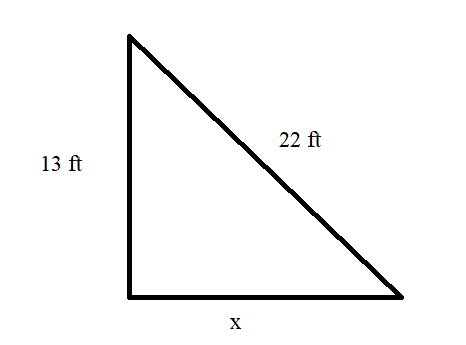A child has a bottle full of pennies, nickels, dimes, and quarters. There are six as many quarters as pennies, two times as many as nickels as pennies, and 5 times as many dimes as nickels. How many more dimes does the child have than nickels?
4 times as many
5 times as many
20 times as many
10 times as many
Correct Answer : B
In this problem, we need to compare the number of dimes to quarters.
If we let p be number of pennies in the bottle. Then,
Number of quarters in the bottle = 6p
Number of nickels in the bottle = 2p
Number of dimes in the bottle =5(2p)=10p
Now relating dimes to nickels, we have

Thus, there are 5 times as many dimes as quarters in the box.
TEAS 7 Exam Quiz Bank
HESI A2 Exam Quiz Bank
Find More Questions 📚
Teas 7 Questions: We got the latest updated TEAS 7 questions
100% Money Refund: 100% money back guarantee if you take our full
assessment pass with 80% and fail the actual exam.
Live Tutoring: Fully customized live tutoring lessons.
Guaranteed A Grade: All students who use our services pass with 90%
guarantee.
Related Questions
Correct Answer is A
Explanation
To determine the correct coordinates of the point shown on the graph, follow these steps:
- Identify the x-coordinate: Count the number of units the point is to the right or left of the y-axis. The point is at 5 on the x-axis.
- Identify the y-coordinate: Count the number of units the point is above or below the x-axis. The point is at -8 on the y-axis.
- The correct coordinates are (5, -8).
Looking at the answer choices:
- A. (5, -8) → Correct
- B. (-5, 8) → Incorrect
- C. (-8, 5) → Incorrect
- D. (8, -5) → Incorrect
Final Answer:
A. (5, -8)
Correct Answer is C
Explanation
Step 1: Calculate the Discounted Price per Unit
The original price of each unit of bedding is $160. Since there is a 10% discount, the discounted price per unit is:
DiscountedPrice =160−(0.1×160) =160×0.9
Step 2: Determine the Total Cost
If X units are purchased, the cost for all units is:
T = (0.9)160X
Since there is a fixed shipping cost of $25 per order, the total cost equation becomes:
T = (0.9)160X+25
Step 3: Identify the Correct Answer
The equation that matches this is:
C. T=(0.9)160X+25
Correct Answer is D
Explanation
Let the unknown length of the x. The resulting rectangle is shown below.

Then, we apply the Pythagoras theorem to find the value of x as:

The value of the unknown length is approximately 17.7 feet.
Correct Answer is B
Explanation
The scatter plot showing the relationship between the number of absences in a semester and students’ final exam scores. The trend shows that as absences increase, exam scores decrease.
This represents a Negative Correlation because:
- When one variable (absences) increases, the other variable (exam score) decreases.
- The points on the scatter plot trend downward from left to right.
Correct Answer is A
Explanation
Based on the given case, the outcome of measuring the duration of opening the bank is the amount of transaction, the number of deposits, and the number of loans available. The three outcomes are dependent variables while the number of opening hours is the independent variable.
Correct Answer is D
Explanation
To find the greatest number from the given options, convert the decimal numbers into fractions.
6.25 becomes 625/100
7.4 becomes 74/10
The LCM for the denominators of 8, 100, 7, and 10 is 2800. Now we can multiply each fraction with the LCM.
3/8*2800=1050
625/100*2800=17500
10/7*2800=4000
74/10*2800=20720
The fraction 7.4is the greatest of all.
Correct Answer is A
Explanation
To find the area of the room, we form an equation of find an equation relating the length and width of the rectangle. If we let the width of the room to be w, then
Width of the rectangle= w
Length of rectangle=(w+8)
Area of the rectangle, A= Length*width=(w+8)*w
A=w(w+8)
Thus, the area of the rectangular room is w(w+8).
Correct Answer is B
Explanation
To find the amount of vanilla in mL, we set up an equation in a way the unwanted units cancel out and leave the wanted unit we are looking for. Then,

Thus, a recipe of 6 teaspoons equals 29.58 mL.
Correct Answer is B
Explanation
A dependent variable changes with any change made in an independent variable. From this case, cost of meals depends on other three options. In other words, the quantity of meal, number of toppings, and types of spices influence the cost of the meal.
Correct Answer is D
Explanation
The final price of the stock on Thursday can be found by finding the price on the previous day taking into account the price changes as follows.
The price of the stock on Monday was $33.65
On Tuesday the price of the stock went up by $1.23 from Monday’s price. Then, Tuesday’s price was $(33.65+1.23)=$34.88
The price of the stock on Wednesday decreased by $0.97 from Tuesday’s price. The price on Wednesday became $(34.88-0.97)=$33.91
Thursday’s price increased by $2.75 from Wednesday’s price, which was $(33.91+2.75)=$36.66
Therefore, the final price of the stock on Thursday was $36.66.
This question was extracted from the actual TEAS Exam. Ace your TEAS exam with the actual TEAS 7 questions, Start your journey with us today
Visit Naxlex, the Most Trusted TEAS TEST Platform With Guaranteed Pass of 90%.
Money back guarantee if you use our service and fail the actual exam. Option of personalised live tutor on your area of weakness.
